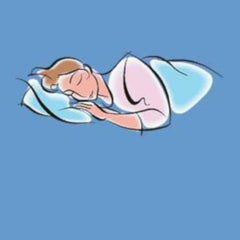Can A Cooler Room Help You Sleep Better?

Avoiding caffeine, sticking to a schedule and drinking a glass of warm milk are the usual tips for a good night’s rest. But the right room temperature can also play a huge role in getting a great night's sleep.
Recent studies have found that , the optimal temperature for sleep is quite cool, around 60 to 68 degrees Fahrenheit. For many people temperatures that fall too far below or above this range can lead to restlessness and in turn to lack of a good night's sleep because you are constantly tossing and turning to feel comfortable. Temperatures in the 60 to 68 degrees Fahrenheit range, it seems, help facilitate the decrease in core body temperature that in turn initiates sleepiness.
A growing number of studies are finding that temperature regulation plays a role in many cases of chronic insomnia. Researchers have shown, for example, that insomniacs tend to have a warmer core body temperature than normal sleepers just before bed, which leads to heightened arousal and a struggle to fall asleep as the body tries to reset its internal thermostat. For normal sleepers, the drop in core temperature is marked by an increase in temperature in the hands and feet, as the blood vessels dilate and the body radiates heat. Studies show that for troubled sleepers, a cool room and a hot-water bottle placed at the feet, which rapidly dilates blood vessels, can push the internal thermostat to a better setting.
THE BOTTOM LINE: A slightly cool room and a lower core temperature are optimal for sleep. Key recommendations for better sleep include using temperature regulating bedding to keep the bed cool and sleeping in moisture wicking pajamas to help keep core body temperatures at the optimum level.

